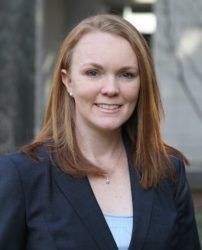As secondary educators plan their fall course material, they will have access to new, online-friendly teaching materials focused on risk education.
Their development has been lead by Janey Camp, associate research professor of civil and environmental engineering, as one component of a national disaster resilience competition.
“Whether you realize it or not, we make decisions about risk daily – from wearing a helmet and seat belt to purchasing home and car insurance,” Camp said. “Part of the reason that our curriculum focuses on high school students is that we want to make sure that the region’s future leaders are risk-informed adults equipped to make better decisions when it is their time to plan for their communities.”

The curriculum, which is broken into a series of ten modules, aims to help students understand risk in both its abstract and tangible forms. In addition, it helps educate students about the impact and likelihood of occurrence within their own communities. Risk tolerance and risk appetite are defined and discussed, giving students the opportunity to think critically about their own perceptions. The material in development is targeted on five counties in west Tennessee and has broad applicability to students around the country.
Seven of the modules are available now, and materials are available and free to the public for use. They can be used as part of the curriculum or independently.
There has been a dearth of risk education material available to primary and secondary school students, and the material is not typically taught in higher education. As a result, it must be learned in a professional setting through on-the-job experience. This new curriculum aims to fill that gap.
Despite experiencing more severe and more frequent weather events like flooding and earthquakes, many leaders around the country have not had the kind of risk education training that could empower them to plan strategically. The goal of the curriculum is to inform tomorrow’s leaders, and through their networks of family and friends, educate others about what risk is and how to more effectively manage it.
The funding for this project is a portion of the award from the 2015 HUD National Disaster Resilience Competition, won by the Tennessee Department of Economic and Community Development (TNECD).